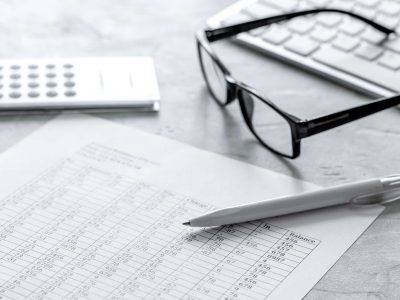Content

Using the straight-line method is the most basic way to record depreciation. It reports an equal depreciation expense each year throughout the entire useful life of the asset until the entire asset is depreciated to its salvage value. Different companies may set their own threshold amounts for when to begin depreciating a fixed asset or property, plant, and equipment (PP&E). For example, a small company may set a $500 threshold, over which it depreciates an asset.

It is calculated by summing up the depreciation expense amounts for each year. Keep in mind, though, that certain types of accounting allow for different means of depreciation. Let’s assume that if a company buys a piece of equipment for $50,000, it may expense its entire cost in year one or write the asset’s value off over the course of its 10-year useful life. Most business owners prefer to expense only a portion of the cost, which can boost net income. There are several methods that accountants commonly use to depreciate capital assets and other revenue-generating assets.
Depreciation
Accumulated Depreciation reflects the cumulative reduction in the carrying value of a fixed asset (PP&E) since the date of initial purchase. If you’re using the wrong credit or debit card, it could be costing you serious money. Our experts love this top pick, which features a 0% intro APR for 15 months, an insane cash back rate of up to 5%, and all somehow for no annual fee. Options trading entails significant risk and is not appropriate for all customers.
Many of these courses are self-paced, allowing you to learn around your schedule. You might consider the Accounting for Decision Making Course offered on Coursera by the University of Michigan. Depreciation schedules can range from simple straight-line to accelerated or per-unit measures. Thomas J Catalano is a CFP and Registered Investment Adviser with the state of South Carolina, where he launched his own financial advisory firm in 2018. Thomas’ experience gives him expertise in a variety of areas including investments, retirement, insurance, and financial planning.
Accumulated depreciation definition
Depreciation expense is recorded on the income statement as an expense or debit, reducing net income. Instead, it’s recorded in a contra asset account as a credit, reducing the value of fixed assets. The accumulated depreciation account is a contra asset account on a company’s balance sheet. Accumulated depreciation specifies the total amount of an asset’s wear to date in the asset’s useful life. Many companies rely on capital assets such as buildings, vehicles, equipment, and machinery as part of their operations. In accordance with accounting rules, companies must depreciate these assets over their useful lives.
- In general, accumulated depreciation is calculated by taking the depreciable base of an asset and dividing it by a suitable divisor such as years of use or units of production.
- To calculate accumulated depreciation using the straight-line method, you’ll first need to calculate the depreciation for every year of the asset’s usable lifetime.
- Theoretically, this makes sense because the gains and losses from assets sold before and after the composite life will average themselves out.
- For each of the ten years of the useful life of the asset, depreciation will be the same since we are using straight-line depreciation.
- Accumulated depreciation is the cumulative depreciation of an asset up to a single point in its life.
- Depreciation is the expense a company records each quarter or year to reflect the loss in value of a fixed asset during that period.
The depreciation rate is used in both the declining balance and double-declining balance calculations. It is based on what a company expects to receive in exchange for the asset at the end of its useful life. An asset’s estimated salvage value is an important component in the calculation of depreciation. For each of the ten years of the useful life of the asset, depreciation will be the same since we are using straight-line depreciation. However, accumulated depreciation increases by that amount until the asset is fully depreciated in year ten. Accumulated depreciation of an asset is an important financial metric for the business as it reduces a firm’s value on the balance sheet.
Accumulated Depreciation vs. Depreciation Expense
This means that the asset’s net book value is $500,000 (calculated as $1,000,000 purchase price – $200,000 impairment charge – $300,000 accumulated depreciation). Accumulated depreciation is a contra asset that reduces the book value of an asset. Accumulated depreciation has a natural credit balance (as opposed to assets that have a natural debit balance). However, accumulated depreciation is reported within the asset section of a balance sheet. This change is reflected as a change in accounting estimate, not a change in accounting principle. For example, say a company was depreciating a $10,000 asset over its five year useful life with no salvage value.
- Depreciation expenses, on the other hand, are the allocated portion of the cost of a company’s fixed assets for a certain period.
- Depreciation is expensing the cost of an asset that produces revenue during its useful life.
- It is a contra asset account, i.e. a negative asset account that offsets the balance in the asset account with which it is usually linked.
- Accumulated depreciation refers to the accumulated reduction in the value of an asset over time.
- Accumulated depreciation is recorded as well, allowing investors to see how much of the fixed asset has been depreciated.
Customers must read and understand the Characteristics and Risks of Standardized Options before engaging in any options trading strategies. Options transactions are often complex and may involve the potential of losing the entire investment in a relatively short period of time. Certain complex options strategies carry additional risk, including the potential for losses that may exceed the original investment amount.
There are several standard methods of computing depreciation expense, including fixed percentage, straight line, and declining balance methods. Depreciation expense generally begins when the asset is placed in service. For example, a depreciation expense of 100 per year for five years may be recognized for an asset costing 500. Depreciation has been defined as the diminution in the utility or value of an asset and is a non-cash expense. It does not result in any cash outflow; it just means that the asset is not worth as much as it used to be. Depreciation expenses, on the other hand, are the allocated portion of the cost of a company’s fixed assets for a certain period.
Subsequent results will vary as the number of units actually produced varies. In other words, depreciation spreads out the cost of an asset over the years, allocating how much of the asset that has been used up in a year, until the asset is obsolete accumulated depreciation definition or no longer in use. Without depreciation, a company would incur the entire cost of an asset in the year of the purchase, which could negatively impact profitability. Accumulated depreciation is not an asset; it does not offer any long-term value.